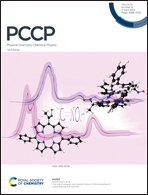Detection of DNA translocations in a nanopore series circuit using a current clamp†
Abstract
The advancement of nanopore sensing technology over the past 20 years has been impressive, particularly in the field of nucleic acid sequencing, which has already been used in commercial diagnostic tests. A traditional configuration of nanopore sensing records the current through a single nanopore using a voltage clamp, which hits a bottleneck in expanding its functions, while integrating several nanopores to build a nanopore circuit may be an effective solution. Here, we report a new strategy combining a nanopore series circuit and a current clamp to record the current signal and the voltage signal of DNA translocation through a nanopore simultaneously, which could increase the fidelity of event analysis. We observed a capacitor-like charging and discharging behavior in the voltage signals and proposed a detailed microscopic mechanism to elucidate it. Our strategy could benefit the development of nanopore technology and contribute to understanding the working principles of the units in a nanopore circuit system.

- This article is part of the themed collection: Emerging concepts in nucleic acids: structures, functions and applications


 Please wait while we load your content...
Please wait while we load your content...